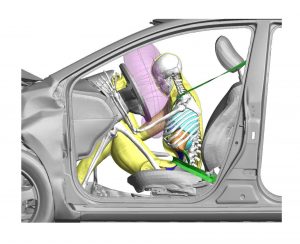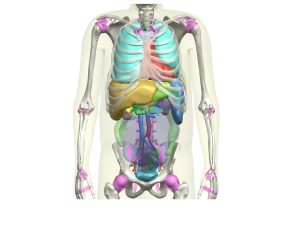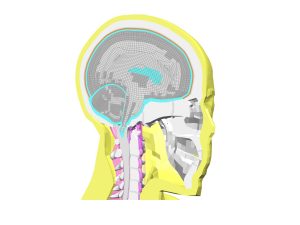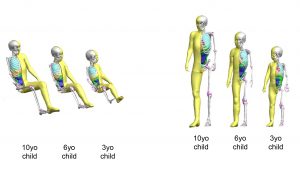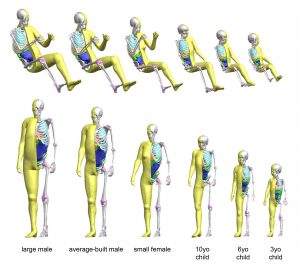Child Models Added to Toyota’s Family of Virtual Crash Dummies
Toyota has developed three new models to replicate the physical characteristics of children aged 10, six and three, increasing the scope of its virtual crash test dummy software – the Total Human Model for Safety (THUMS) to map and simulate the injuries sustained by human bodies in vehicle crashes. Developed by Toyota and its academic research partners in the USA, the new software models will be offered for sale to others from the autumn.
THUMS can forecast the extent of likely injuries throughout the human body, providing a valuable tool in the development of new passenger protection devices, such as airbags, and the design of safer vehicles.
The new child models are designed to represent the average physiques of children at different ages: 94cm tall at three years, 118 at six and 138 at age 10. As with the models already available – large and average-build males and a small female – they will each be offered in two versions: a passenger and a pedestrian.
The software has undergone constant improvements and refinements, ever since THUMS Version 1 was launched in 2000. For Version 2, which was released in 2003, faces and bone structure were added to the models. Version 3, launched in 2008, added a brain simulation and in 2010, Version 4 was upgraded with detailed modelling of the brain and the addition of internal organs, pinpointing their placement and interaction within the body. In 2015, Version 5 added simulated musculature, allowing the models to assume the same bracing positions that a human might just before an impact.
The new child models have been created through joint research between Wayne State University, the University of Michigan and the Collaborative Safety Research Centre at the Toyota Technical Center in Michigan.
THUMS is used for a wide variety of purposes by car makers, parts manufacturers, and universities, both in Japan and overseas. It contributes to research on safety technologies not just at Toyota, but also by organisations all over the world. For example, in motorsports, it is being used for the development of safer seat designs for NASCAR racing cars in North America. With the ultimate goal of eliminating traffic fatalities and injuries, Toyota will use THUMS to analyse the injuries sustained by passengers and pedestrians during collisions with and between vehicles, and to further research and improve safety technologies of all kinds.
THUMS timeline
| 1997 | Toyota begins developing THUMS in cooperation with Toyota Central R&D Labs, Inc. |
| 2000 | Version 1 goes on sale |
| 2003 | Version 2 adds detailed modelling of faces and bones |
| 2008 | Version 3 adds a detailed model of the brain |
| 2010 | Version 4 allows for detailed modelling of internal organs |
| 2015 | Version 5 adds detailed modelling of muscles |
| 2016 | New child models are added to Version 4 |
ENDS
Note to editors
Toyota’s Collaborative Safety Research Center was established in 2011. It aims to reduce the number of traffic fatalities and injuries through collaborative research with North American universities, hospitals and research agencies, and by sharing the results of this research with society.

